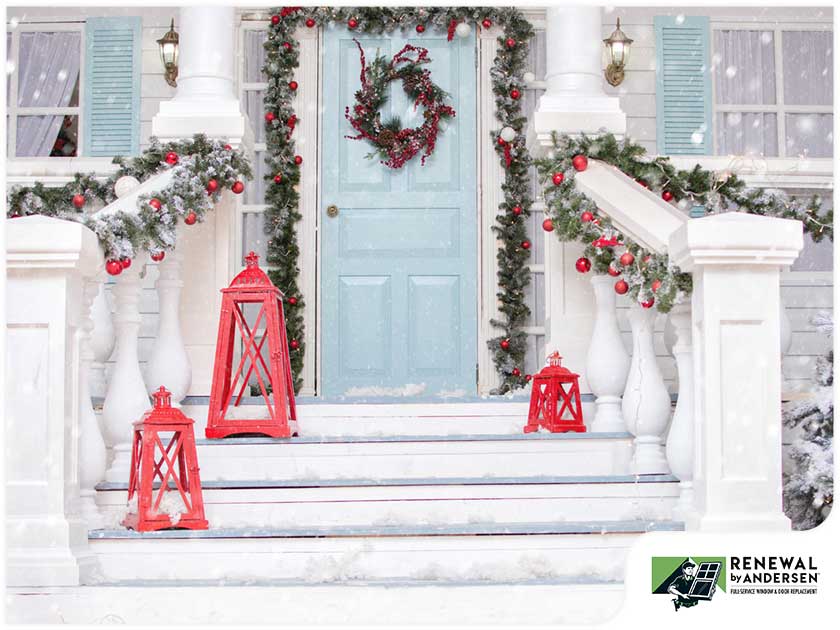MENU


The season of hot chocolate and comfy sweaters is drawing near. While winter can be a very exciting time, the cold temperature can often bring trouble to your home. Your entry doors can protect your home against extreme winds and heavy snowfall, but there may be instances when the cold weather can be especially harsh towards them.
As such, you must be aware of these issues to prevent them from getting worse. In this article, Renewal by Andersen® of New Jersey will shed light on four common door problems you might face during winter.
1. Door Binds in the Upper Corner
If you have an authentic wood entry door, you might be susceptible to this phenomenon. As the weather changes, it can cause the door or its frame to expand and contract. Over time, they can get stuck. When the door binds in the upper corner of the jamb, it’s typically the result of the door pulling down at an angle from the top corner.
Remember that the space between the door and the jamb, also known as the reveal, should be about the thickness of a nickel. This can help prevent door binding during the winter season.
2. Door Screws Coming Loose
Like door binding, the screws of your door may come loose because of the changes in humidity and temperature. This can affect many door styles, including French doors. While this may not seem like a big deal to some homeowners, it can lead to bigger problems. As time goes by, the loose screws can cause your door to sag and not fit squarely within the frame. This can also cause the door to rub or stick against the frame.
To fix this, you might want to simply tighten the existing screws. However, if the screws are stripped, you’ll have to drill new pilot holes for new screws. Aside from this, you can replace the existing screw with one of a larger diameter. If that doesn’t work, try using a dowel.
3. Door Latch Misses the Strike Plate
If your door latch misses the strike plate, this means that the strike plate is misaligned. Even a fraction of an inch can make a difference and prevent the door from closing all the way through. This problem usually occurs because the parts on the door or jamb have loosened, causing them to come out of alignment. To ensure that the door will latch properly, be sure that the small metal plunger on the side of your door must fit near into the plate that’s attached to the frame.
Additionally, if you notice the door latch is missing the strike plate, you should not force the door to close. This can lead to sticking or even binding. To fix this, you might want to adjust the strike plate, so it can properly align with your door.
4. Door Fades From Cold Weather
Winter brings along cold and wet weather, which can have a negative impact on your front door. Moisture from winter weather can ruin the appearance of your door, causing it to lose its vibrant color. This is especially true if your door is made from wood. However, there are numerous treatments you can use to protect it from moisture.
If you want a long-term solution, you might want to invest in an entry door made of fiberglass material. Fiberglass can withstand moisture damage, and it’s specially treated to prevent fading. No matter the season or weather, your fiberglass door remains beautiful and sleek.
By taking note of these common issues, you can prepare your door in time for the winter season. If you have more inquiries on door protection, get in touch with us at Renewal by Andersen of New Jersey. We offer a wide variety of door styles, including sliding patio doors and more. Call us today at (866) 609-5033 or fill out our contact form to set an appointment. We also serve homeowners in Hillsborough, New Jersey.